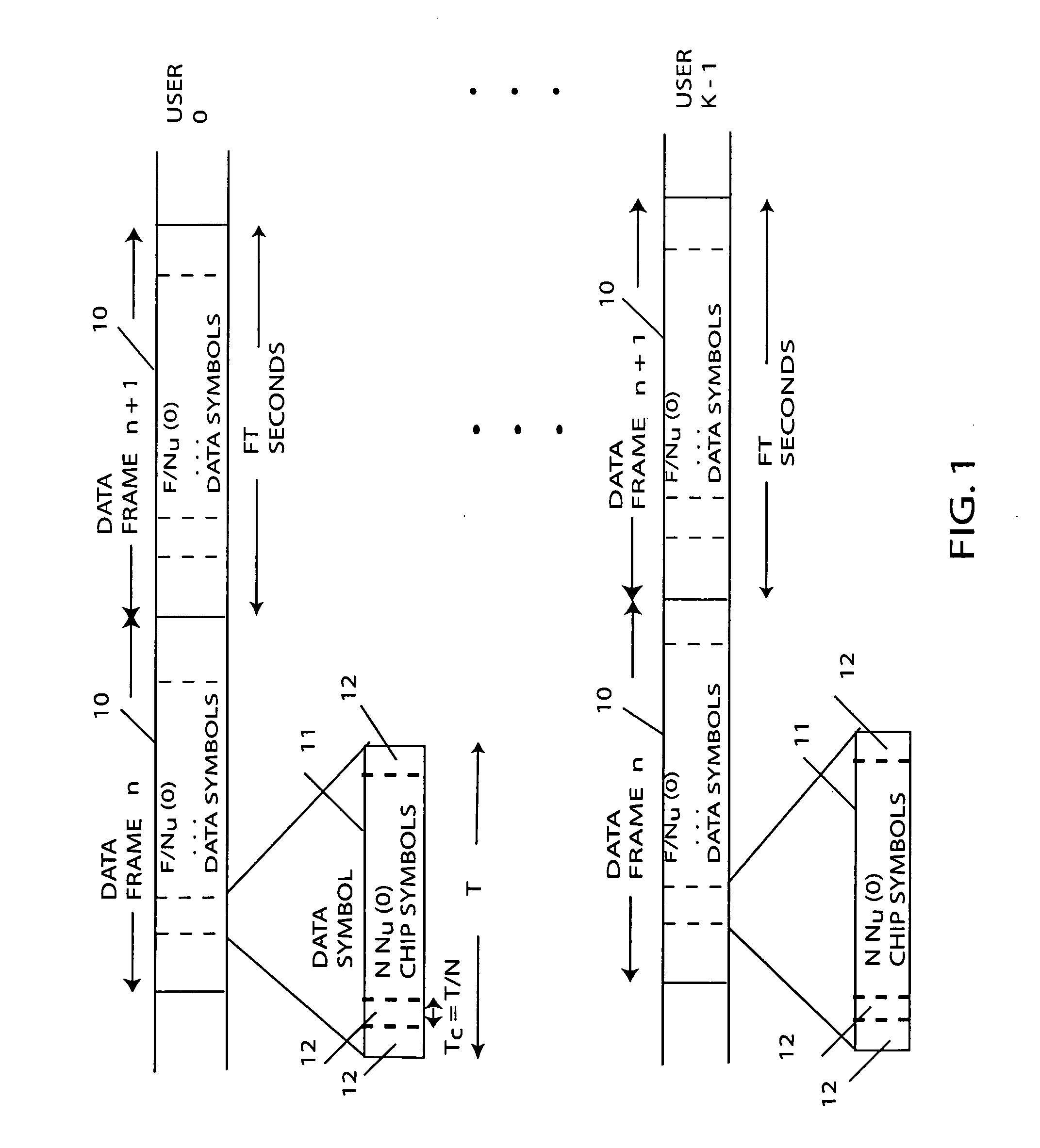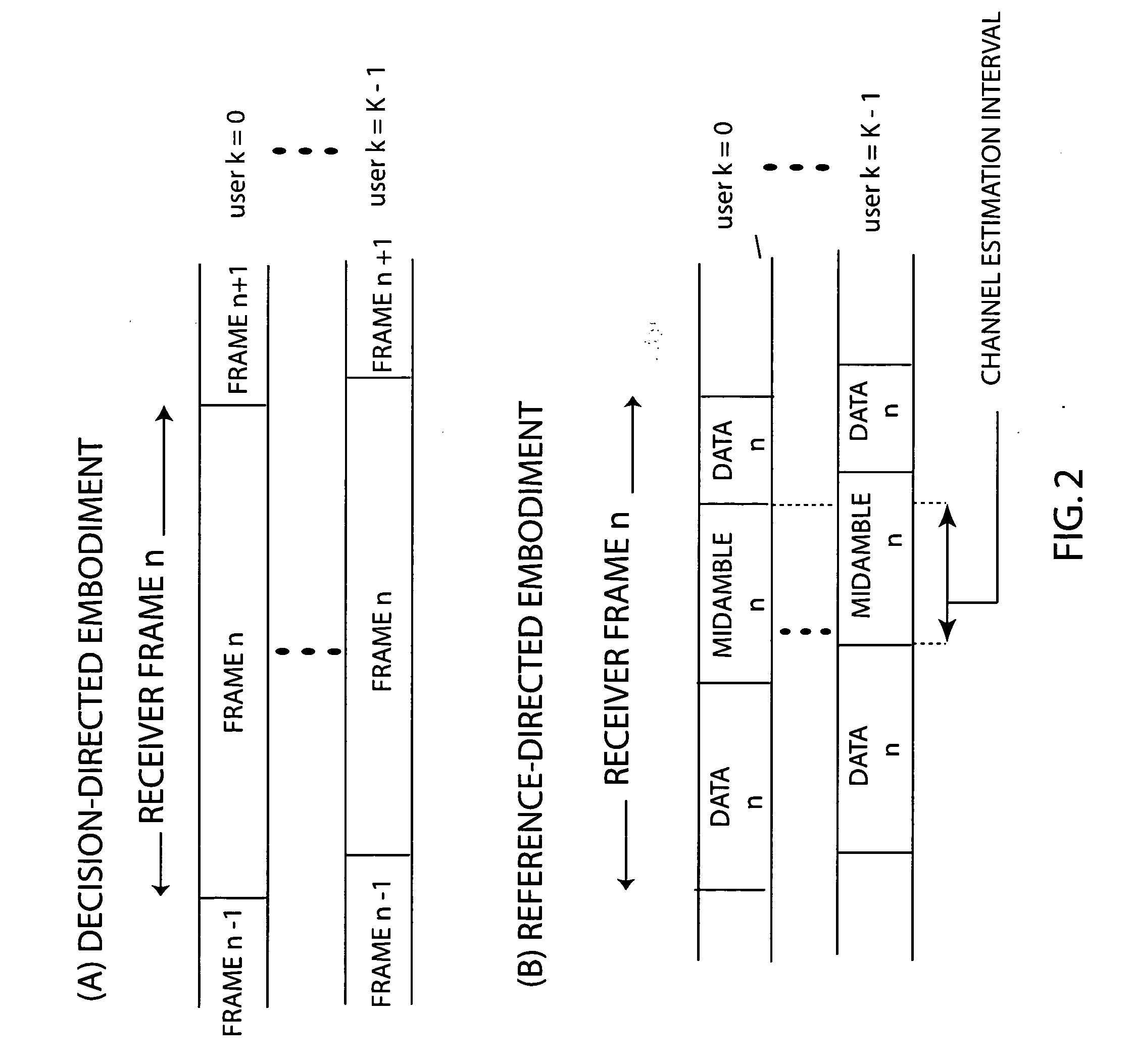Technique for adaptive multiuser equalization in code division multiple access systems
a multi-user equalization and code division technology, applied in the field of code division multiple access systems, can solve the problems of limiting the capacity of present cdma systems, lack of synchronization, and degradation of data symbol detection quality, and achieve the effect of enhancing interference reduction
- Summary
- Abstract
- Description
- Claims
- Application Information
AI Technical Summary
Benefits of technology
Problems solved by technology
Method used
Image
Examples
Embodiment Construction
[0045] A multiuser system is described that employs block symbol-by-symbol decision-feedback equalization to reduce multiple-access and multipath interference in a multiple data rate, synchronous or asynchronous CDMA system with a plurality of users. The invention embodiments include a reverse link application wherein geographically separate user transmitting terminals, e.g. mobile cellular telephones, transmit to a receiver at a central station, e.g. a cellular base station, and a forward link application wherein the user transmitting terminals are collocated at a central station and the receiving terminal is within a cell region associated with the central station. Channel estimation in these link embodiments is accomplished with either a referenced-directed or decision-directed embodiment. The invention embodiments also include (1) a short PN code period with application in WCDMA reverse links, in IS-95 forward links, and in TDMA / CDMA reverse and forward links and (2) a long PN c...
PUM
 Login to View More
Login to View More Abstract
Description
Claims
Application Information
 Login to View More
Login to View More - R&D
- Intellectual Property
- Life Sciences
- Materials
- Tech Scout
- Unparalleled Data Quality
- Higher Quality Content
- 60% Fewer Hallucinations
Browse by: Latest US Patents, China's latest patents, Technical Efficacy Thesaurus, Application Domain, Technology Topic, Popular Technical Reports.
© 2025 PatSnap. All rights reserved.Legal|Privacy policy|Modern Slavery Act Transparency Statement|Sitemap|About US| Contact US: help@patsnap.com



